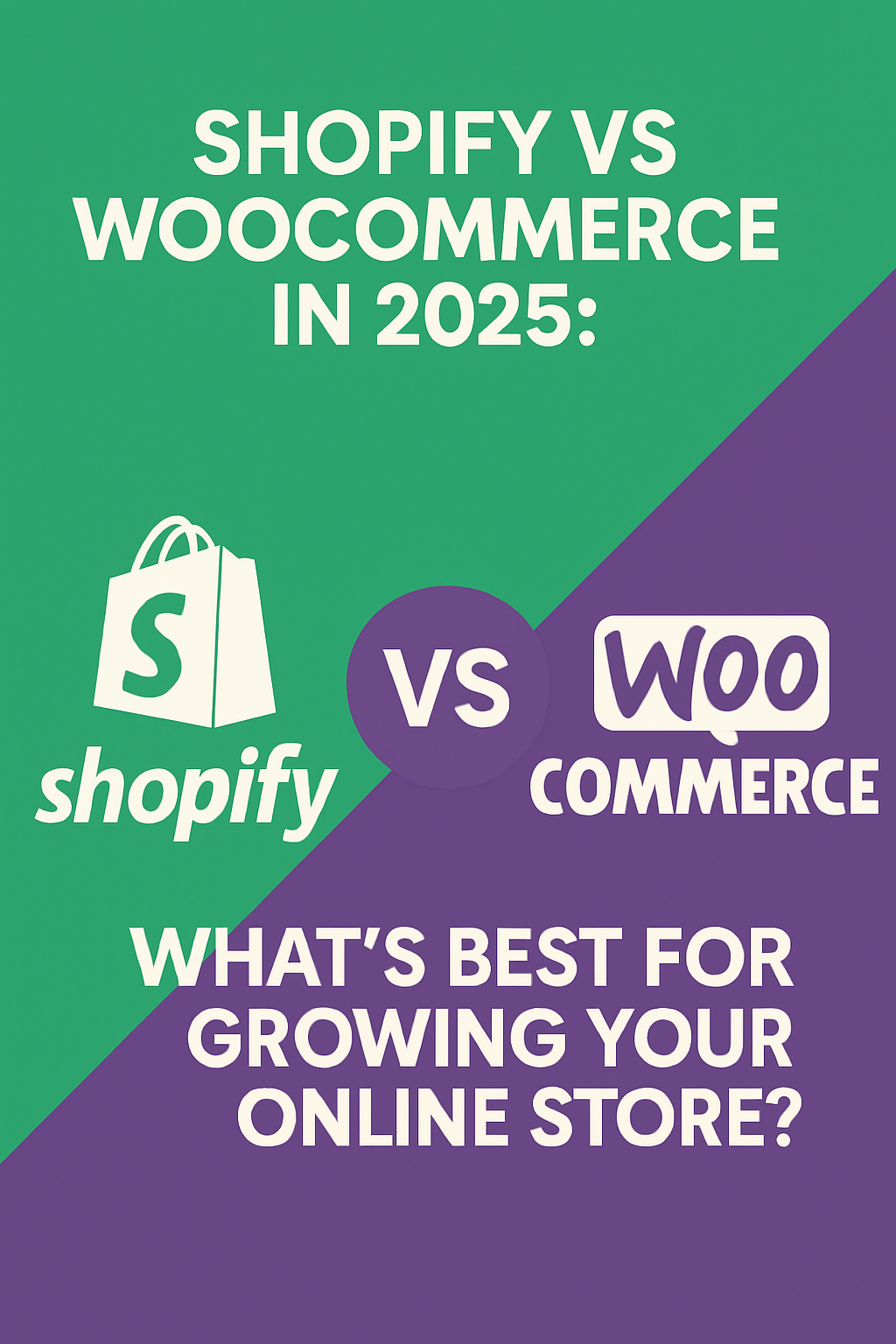Selecting the right ecommerce platform can either make or break your online business. Shopify and WooCommerce remain two of the most powerful contenders, but their suitability depends on your business model, growth goals, and technical requirements. This article compares both platforms as we move into 2025, factoring in cost, SEO, customization, and more.
Shopify: All-in-One Simplicity
Shopify is known for its ease of use, fast setup, and comprehensive support. It’s a hosted platform, meaning you don’t have to worry about hosting, security, or updates—it’s all managed for you.
Pros:
- User-friendly interface
- Excellent customer support
- Built-in hosting and security
- Scalable for rapid growth
- Huge app store for integrations
Cons:
- Limited customization for advanced needs
- Transaction fees unless using Shopify Payments
- Monthly subscription costs add up for larger stores
WooCommerce: Flexibility and Control
WooCommerce is an open-source WordPress plugin that gives you full control over your website. It’s best suited for those who need custom ecommerce solutions or already use WordPress for content management.
Pros:
- Fully customizable via WordPress
- Wide range of plugins and integrations
- Open-source and free to start
- Large community support
Cons:
- Requires hosting and security setup
- More hands-on maintenance
- Can become expensive with premium plugins and developer costs
SEO and Performance Comparison
WooCommerce SEO Strengths
- Deep integration with Ecommerce SEO services plugins like Yoast and Rank Math
- More control over metadata, URL structure, and schema markup
- Flexibility to create long-form, content-rich pages for blogging and content marketing
Shopify SEO Strengths
- Built-in SEO optimization services like automatic sitemap generation, 301 redirects, and optimized mobile themes
- Fast server response times due to Shopify’s cloud hosting infrastructure
- Excellent uptime and CDN integration for global performance
Payment Gateways and Checkout Experience
Shopify supports 100+ payment gateway integration options and offers a smooth, fast checkout experience that is well-optimized for conversions. WooCommerce supports many gateways, too, but the checkout process may need additional customization to be seamless.
Notable Features:
- Shopify’s one-page checkout boosts conversion rates.
- WooCommerce supports Stripe, PayPal, and local gateways common in the MENA region.
- Subscription services are better integrated with Shopify apps like Recharge.
Marketing Tools and Integrations
Shopify
- Built-in email marketing and automation tools
- Easy integration with Facebook, Instagram, TikTok, Google Shopping
- Access to Shopify Flow for automation (Shopify Plus users)
WooCommerce
- Advanced CRM integrations like HubSpot and Mailchimp
- Complete access to blogging tools via WordPress
- Pixel and analytics flexibility for custom tracking setups
Customization & Design Freedom
WooCommerce is more flexible because it’s open-source. Developers can customize every aspect of the site. Shopify is easier for beginners but may feel restrictive for advanced design changes.
Real-World Use Cases
- A lifestyle brand wanting fast market entry may choose Shopify.
- A tech startup with unique functionality requirements might opt for WooCommerce for its custom web development capabilities.
Cost Comparison Over Time
Shopify plans range from $39 to $399 per month. Additional costs come from apps, themes, and transaction fees. WooCommerce itself is free, but domain, hosting, premium themes, and plugins can accumulate expenses quickly.
Long-Term Costs Breakdown:
| Cost Area | Shopify (Monthly) | WooCommerce (Variable) |
| Platform | $39 – $399 | $0 |
| Hosting | Included | $5 – $30/month |
| Plugins/Apps | $0 – $100+/mo | $0 – $200+ (yearly) |
| Maintenance | Minimal | Requires developer/admin |
User Experience and Performance Metrics
- Shopify sites load in under 2 seconds on average
- WooCommerce performance depends on your speed optimization services and hosting setup.
- Shopify offers built-in CDN and DDoS protection
Case Study: Speed Dot 360 Ecommerce Client
A beauty brand consulted Speed Dot 360 to migrate from WooCommerce to Shopify to improve mobile conversions. Within 90 days:
- Mobile cart abandonment dropped by 18%
- Page speed improved from 4.5s to 1.9s
- Conversion rate increased by 22%
Who Should Choose What?
- Choose Shopify if You need fast setup and scalability with minimal technical involvement. Great for non-technical teams.
- Choose WooCommerce if: You want complete control and already use WordPress. Ideal for tech-savvy teams with customization needs.
Expert Opinions
According to BuiltWith (2024), WooCommerce powers 22% of the top 1 million ecommerce sites, while Shopify leads with 28%. The gap is narrowing due to WooCommerce’s ecommerce solutions and SEO strengths.
“Shopify removes the tech headache for most businesses, while WooCommerce rewards those willing to invest in custom ecommerce solutions.” — Ecommerce Weekly.
Final Verdict
There’s no one-size-fits-all. It depends on your resources, vision, and technical capacity. At Speed Dot 360, we help brands navigate both platforms to find the best fit for their growth through personalized audits, platform migration, and ecommerce maintenance services.
Let your ecommerce tech stack be your growth engine—not your bottleneck.





